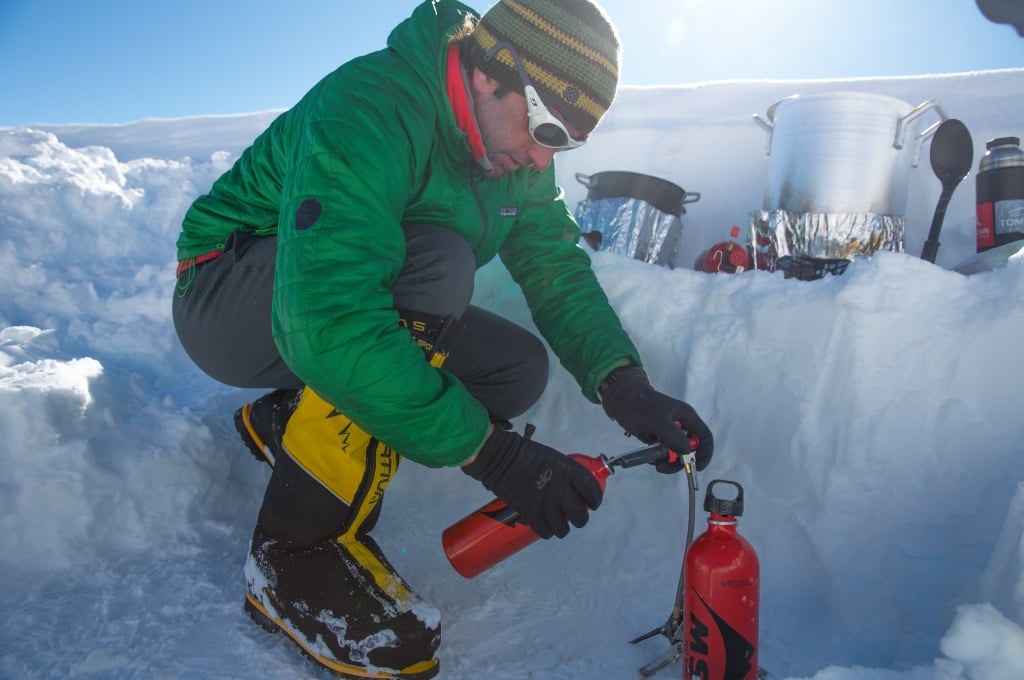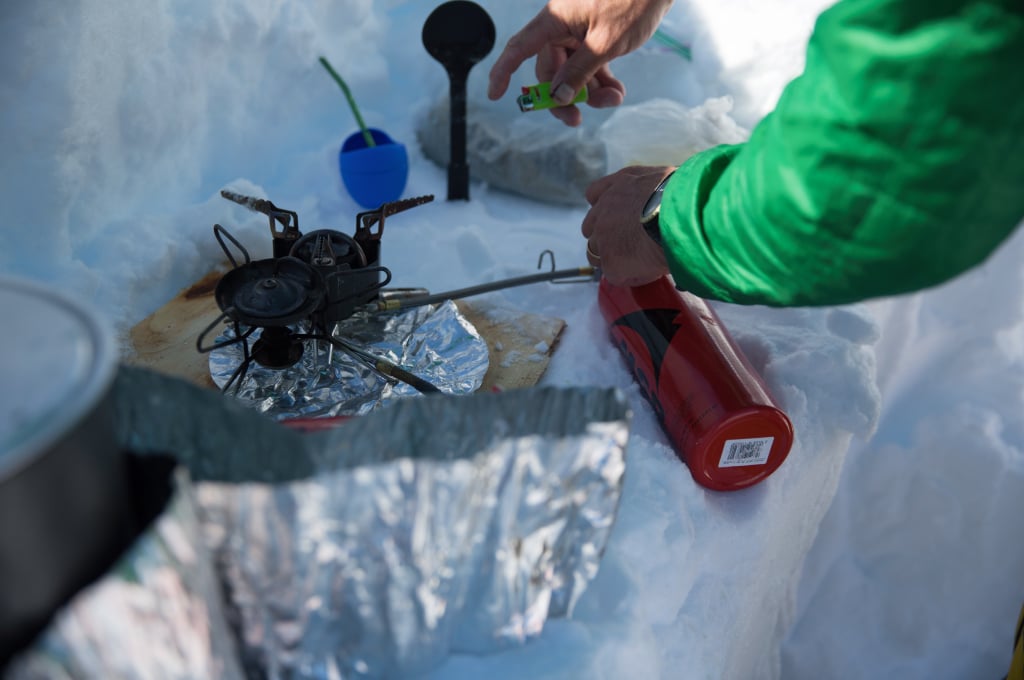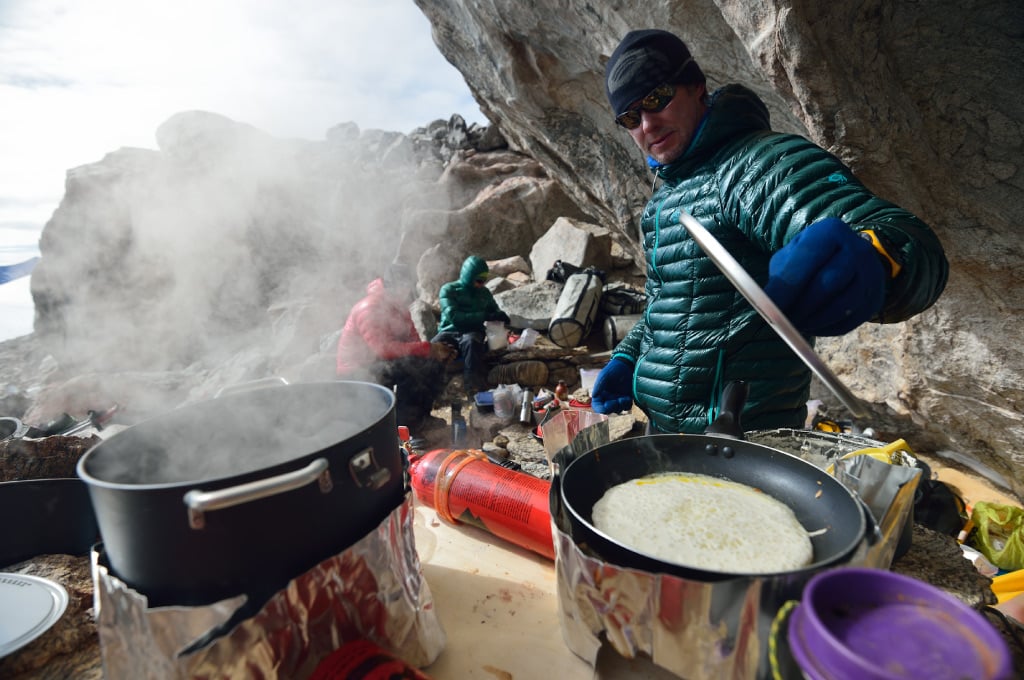8 Reasons Liquid Fuel Stoves are Better for Winter Camping
Packing for a multi-day winter camping trip requires extra calculation of your gear. Whether you’re ski-touring through Yellowstone Basin or tackling Mount Katahdin on snowshoes, your gear needs to withstand the snowy environment and its subfreezing temperatures. For these types of adventures, a liquid fuel stove is your most reliable choice. Traditional canister stoves struggle as the temperatures drop, which is why some (like MSR’s Reactor, WindBurner, and PocketRocket Deluxe) employ a pressure regulator to help the stove power on through colder temps. But when it comes to camping in the heart of winter, liquid fuel stoves like the WhisperLite, XGK-EX, and DragonFly are your best bet. Let’s take a look at why.
8 Reasons Liquid Fuel Stoves are Better for Winter Camping

1. Consistent Output in Cold Temps
The primary reason liquid fuel is preferable for deep winter camping, is the ability to regulate the fuel bottle’s pressure at low temperatures. Because you’re able to pressurize the fuel bottle with its pump as you cook, you can maintain the pressure the stove needs to deliver its powerful output regardless of temperatures. In contrast, canister stoves generate their output from the pressure inside the canister. As temps drop, this pressure decreases and there’s nothing you can do to offset it. (Some MSR canister stoves feature a pressure regulator to help them perform with very low pressure, until it drops below their regulated setting.) Liquid fuel stoves don’t have these limitations because they’re kept consistently pressurized by you. This way, you’ll enjoy hot meals and drinks despite the frigid temps of winter.
2. Exact Fuel Measurements
Packing the right amount of fuel is much more precise with liquid fuel bottles. You can calculate exactly how much fuel you’ll need for your trip and fill your fuel bottle(s) with accuracy, instead of carrying around extra canisters that may give you a few more ounces but come with added weight for that insurance. And, as noted above, liquid fuel performs the same regardless of fuel level. Canister fuel gives a lower output as the fuel level, and thus internal pressure, drops.
3. Field Maintenance
Though it’s rare that something will go wrong with your canister stove in the field—if it does occur there’s not much you can do about it. Liquid fuel stoves, on the other hand, are fully field maintainable.
4. Stability
Liquid-fuel stoves are lower-profile and provide greater stability on uneven or meltable ground like snow and ice than most canister stoves. Though stands can help widen the canister stove base, liquid fuel stoves (and inverted canister designs like the MSR WindPro) are better suited for these conditions.

5. Fuel Weight/Space
Liquid fuel stoves may be slightly heavier than canister stoves, but aside from the remarkable, all-condition performance of the Reactor System, they generally offer increased cold-weather fuel efficiency that saves total weight. They’re more efficient in winter because you’re able to keep them pressurized and burning strong, while canister stoves lose performance as temperatures drop and take longer to heat that pot of water, using more fuel. So for trips that require cooking in subfreezing conditions or when melting snow for drinking water, the weight savings in fuel can be significant. Not to mention that if you choose to go the canister route, you’ll have to keep carrying them for the rest of the trip—even if they’re empty.
6. Fuel Cost
No matter the temperature, utilizing liquid fuel will cost you significantly less than using canister fuel; buying high-quality white gas, like MSR SuperFuel, can often be half the price of canister fuel.
7. Fuel Availability
No matter where you go in the world, liquid fuel is almost always available. If you’re planning an expedition in far-flung locales, using a liquid fuel stove is the wiser choice. Many of these stoves, including the WhisperLite International, Whisperlite Universal, DragonFly and the XGK stoves, also run on a variety of different fuels in addition to the traditional (and preferred) white gas.
8. Environmentally Conscious
Liquid fuel bottles are the clear choice for an eco-friendly fuel source. Rather than throwing away or recycling MSR’s IsoPro canisters after your winter trip, you can refill your liquid fuel bottle time and again.
Perfect winter camping scenarios for liquid-fuel stoves

1. Multi-Step Meals
You and a partner are headed into the backcountry for a week of ski touring. Pack weight is important, but so is the ability to effectively cook and melt snow in subfreezing conditions and melt snow. Many of the meals you’ve brought are multi-step for maximum calories, but you’ve thrown in a few easy freeze-dried packets as well. Since you’ll be cooking often and for longer amounts of time, the WhisperLite is a perfect match for you. Reliable and compact, this stoves offers fuel efficiency at low temperatures to reduce the overall amount of fuel weight you will need to carry. If you’re planning a touring trip to a remote destination where white gas might not be readily available, the WhisperLite International or Universal also burn kerosene and unleaded auto fuel.
2. Large Groups
You and your group are planning a mid-winter backcountry snowshoe trip. You might bring two or more stoves because of your group size, but each one needs to perform optimally in subfreezing conditions. If you’re excited to cook kitchen-quality meals on trail, then the DragonFly is your stove of choice since it fits the full gamut of cook pot sizes while operating with superb fuel efficiency. It is also able to simmer and burns multiple types of fuel.
3. Mountaineering
You’re out for a summit push and will be cooking in subfreezing, high-elevation conditions day after day. You’ve got three or more people with you and you’re using your stove to boil water for everyone. The stove designed for exactly these harsh expedition conditions is the XGK-EX. A mainstay for guides and mountaineers around the world, this stove’s reliability, multi-fuel efficiency, and easy field maintainability has made it the most trusted expedition stove in the world.
Related Posts:
- Which Stove Should I Bring? Best Stoves for Any Adventure
- Find Right Fuel for Your Liquid Fuel Stove
- Canister Stoves vs. Liquid Fuel Backpacking Stoves
By Claire Jencks
Updated. Originally Published October 10, 2019.
